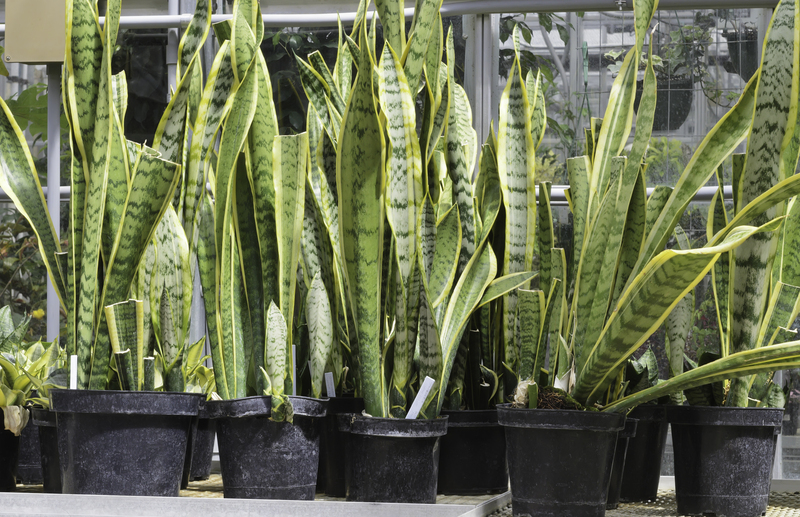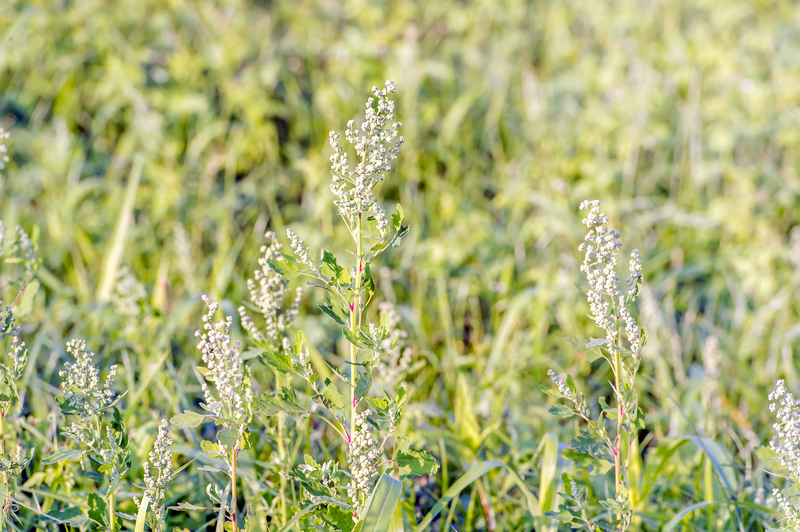Gardens as Climate Warriors in a Changing World
Posted on 21/06/2025
Gardens as Climate Warriors in a Changing World
In today's rapidly evolving environmental landscape, gardens are emerging as powerful allies in the global fight against climate change. No longer just pretty patches of greenery, gardens of all types -- urban, suburban, and rural -- have the capacity to play a crucial role in climate resilience, carbon sequestration, and ecosystem restoration. As our climate continues to warm and weather patterns become increasingly erratic, it's time to rethink the humble garden as a bold climate warrior.
Understanding the Role of Gardens in the Environment
Gardens are much more than ornamental spaces; they are micro-ecosystems that mirror the natural world's functions. These living landscapes act as climate regulators, wildlife refuges, and even food sources in our communities. By fostering plant diversity, improving soil health, and supporting pollinators, gardens have real power to protect our environment -- and our future.
- Habitat for Biodiversity: Gardens provide shelter and food for birds, insects, and small mammals, supporting vital pollination and pest control services.
- Carbon Sinks: Through photosynthesis, garden plants capture and store atmospheric carbon dioxide, helping to offset greenhouse gas emissions.
- Temperature Moderation: Gardens help cool urban environments, reducing the impacts of heat islands.
- Stormwater Management: Healthy garden soils absorb and filter rainfall, minimizing flooding and water pollution.

The Climate Crisis: Why Gardens Matter Now More Than Ever
The climate crisis poses unprecedented challenges, from rising sea levels to prolonged droughts and unpredictable storms. While global solutions require policy changes and technological advances, local actions -- like transforming our gardens -- have a meaningful impact. Climate-resilient gardening can mitigate climate change and adapt to its inevitable effects.
1. Gardens Absorb Carbon Dioxide
Plants absorb carbon dioxide (CO2), a greenhouse gas, during photosynthesis and lock it away in their tissues and in the soil. This process, called carbon sequestration, is one of our most effective natural tools for fighting climate change.
- Deep-rooted perennials and trees: These plants store more carbon for longer periods than annuals.
- Composting: Returning organic matter to the soil bolsters carbon storage and reduces methane emissions from landfills.
2. Gardens Foster Biodiversity as Climate Buffers
A diverse garden creates robust ecosystems able to withstand extreme weather and disease outbreaks. Plant diversity increases resilience because different species cope with stress differently, ensuring that some always thrive.
- Native plants: These are adapted to local conditions and support native wildlife.
- Pollinator gardens: By supporting bees, butterflies, and other pollinators, gardens help stabilize food systems.
3. Water-wise Gardening Tackles Drought
As droughts intensify, climate warriors in the garden use strategies such as:
- Rain gardens that collect and absorb stormwater.
- Mulching to retain soil moisture and suppress weeds.
- Drought-tolerant plants that require less irrigation.
4. Urban Gardens and the Heat Island Effect
Urban spaces become significantly hotter than rural areas, harming our health and increasing energy use. Urban gardens cool the air through shade and natural evaporation, making cities more livable and reducing reliance on air conditioning.
- Green roofs and walls insulate buildings and provide habitat for wildlife.
- Tree canopies absorb heat and provide vital shade.
Climate-Smart Gardening: Practical Steps for Change
Each garden, regardless of size or location, can make a difference. The following climate-friendly gardening practices turn every plot into a garden climate warrior:
Choose Climate-Resilient Plants
Select native and drought-tolerant plants that require fewer inputs and adapt better to changing weather. These species thrive on rainfall, support wildlife, and usually resist local pests and diseases.
Build Healthy Soils
Soil health underpins every garden's climate impact. Practices such as composting, cover cropping, and reducing tillage increase organic matter, improve water retention, and enable soils to store more carbon.
Conserve Water and Reduce Runoff
Implementing strategies like
- Drip irrigation and rainwater harvesting
- Strategic mulching
- Permeable pathways that allow water to soak into the ground
Support Pollinators and Local Wildlife
Transform your garden into a biodiversity haven by planting nectar-rich flowers, providing nesting sites, and avoiding pesticides. The more life your garden supports, the more climate resilient it becomes.
Reduce, Reuse, Recycle
Use recycled materials for garden structures, repurpose containers, and compost kitchen waste. Every bit of waste avoided reduces your garden's carbon footprint, further strengthening its role as a climate warrior.
Food Gardens: Strengthening Local Food Security
Edible landscapes offer a direct response to both climate mitigation and adaptation. Growing your own fruits, vegetables, and herbs reduces the carbon emissions associated with transporting food. Community gardens in particular foster social bonds, provide fresh produce for neighborhoods, and offer hands-on climate education.
- Planting a vegetable garden reduces reliance on industrial agriculture and decreases "food miles."
- Permaculture principles create closed-loop systems mimicking nature and minimizing waste.
Composting: Returning Life to the Soil
Composting not only diverts organic waste from landfills but also enriches garden soil, improves its structure, and increases its capacity to store carbon and retain water. This fundamental practice amplifies a garden's impact as a climate ally.
Urban Gardens: Green Havens in Concrete Jungles
City dwellers can harness the potential of urban gardens -- converting rooftops, vacant lots, and balconies into oases of greenery. Urban gardens not only boost climate resilience but also enhance mental and physical well-being for residents.
The Power of Community Gardens
Community gardens bring people together, promote sustainable practices, and transform neighborhoods into more climate-friendly landscapes. These shared spaces often use innovative water management, composting, and plant diversity strategies.
- Local stewardship increases knowledge and environmental engagement.
- Green spaces reduce city heat and filter air pollutants.
Gardens as Outposts for Climate Education
Gardens are living laboratories where children and adults alike can learn about climate change, sustainability, and ecological stewardship. Schools, public parks, and private backyards serve as platforms to demonstrate -- not just discuss -- the solutions we urgently need.
- Children gain firsthand experience with plant lifecycles, pollinators, and soil health.
- Workshops in community gardens build awareness and inspire broader action.
Technology and Innovation in Climate-Friendly Gardens
Smart technology further amplifies the climate impact of gardens. From moisture sensors and automated irrigation to solar-powered lighting and real-time wildlife monitoring, innovation is driving a new age of climate-resilient gardening.
- Data-driven gardening improves resource use efficiency.
- Low-emission tools reduce direct pollution from garden maintenance.
Challenges and Opportunities Ahead
While the potential for gardens as climate warriors is immense, challenges remain. Urbanization, habitat loss, invasive species, and resource scarcity continue to threaten garden ecosystems. However, every gardener can be part of the solution -- turning problems into opportunities by embracing sustainable practices and sharing their knowledge.
Policy and Community Support
Support from local governments and NGOs can accelerate the transformation of gardens into climate-resilient landscapes. Incentives for green roofs, rain gardens, and pollinator-friendly plantings can make sustainable gardens the default in our communities.

Conclusion: Join the Movement -- Make Your Garden a Climate Warrior
In a changing world, gardens offer hope and practical solutions to some of our greatest environmental challenges. Whether you nurture a single balcony plant or manage an expansive urban farm, your actions matter. By implementing climate-smart practices, you can transform your garden from a simple leisure space to a vibrant front line in the climate fight.
Gardens as climate warriors represent a small-scale revolution with far-reaching impact. If everyone embraced sustainable, resilient gardening, the cumulative effect could help secure a healthier, more stable planet for generations to come. So, roll up your sleeves, get your hands dirty, and let your garden become an unstoppable force for climate good!
Frequently Asked Questions about Climate-Friendly Gardens
-
How does gardening help combat climate change?
Gardening fights climate change by absorbing carbon dioxide, cooling local environments, and supporting biodiversity. Sustainable gardening practices can significantly reduce your carbon footprint and build climate resilience. -
What plants are best for a climate-resilient garden?
Native and drought-tolerant plants are ideal. Species like lavender, coneflower, and native grasses thrive with less water and provide habitat for pollinators. -
How can urban residents turn limited space into a climate-friendly garden?
Try container gardening, vertical gardens, or participating in community plots. Even small spaces can become climate warriors with the right plant choices and care. -
Are there resources to help start a sustainable garden?
Many local extension offices, environmental groups, and online platforms offer guides, workshops, and seeds for climate-smart gardens.
Start today, and let your garden shine as a climate warrior in a changing world!

